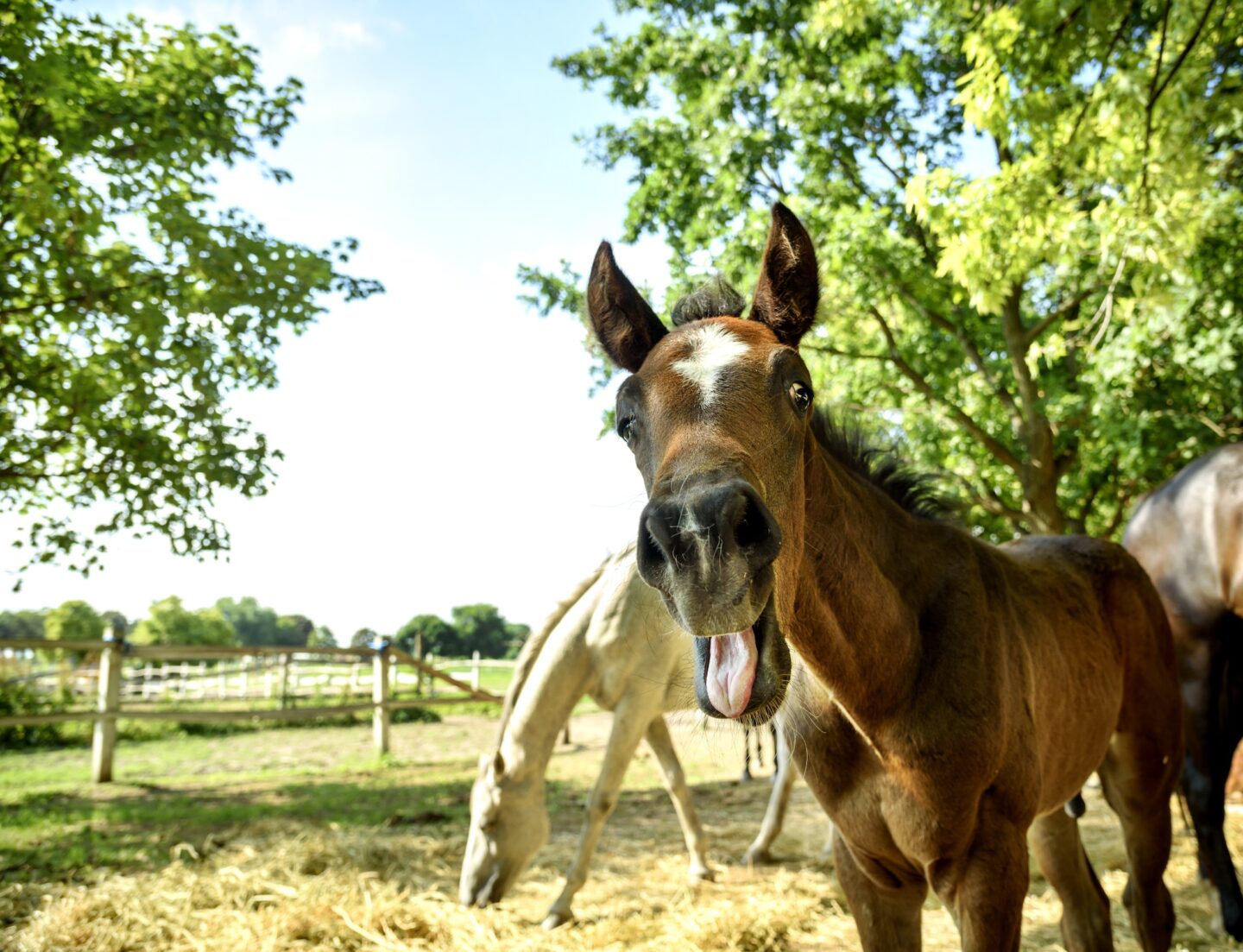As horse enthusiasts, we often find ourselves marveling at the complexity and beauty of these magnificent creatures. One question that frequently arises is whether horses can communicate with each other. The answer is a resounding yes! Horses are highly social animals with a rich and nuanced communication system. In this post, we’ll explore the fascinating world of equine communication and delve into the various ways horses “talk” to one another.
The Importance of Horse Communication
Before we dive into the specifics of how horses communicate, it’s crucial to understand why this communication is so important. In the wild, horses live in herds, and effective communication is essential for:
- Establishing and maintaining social hierarchies
- Warning of potential dangers
- Coordinating group movements
- Expressing emotional states
- Facilitating mating and reproduction
Even in domesticated settings, these communication skills remain vital for horses’ well-being and social interactions.
Vocal Communication
Contrary to popular belief, horses are not silent animals. They use a variety of vocalizations to communicate with each other:
- Neighing: This is perhaps the most recognizable horse sound. Horses neigh to greet other horses, call for attention, or express excitement.
- Nickering: A soft, low-pitched sound often used between a mare and her foal or between horses that are friendly with each other.
- Snorting: This can indicate alertness, excitement, or potential danger.
- Squealing: Often heard during play or when establishing dominance.
- Groaning: May indicate discomfort or contentment, depending on the context.
Body Language
In my previous article, “Horse Talk: Understanding Equine Communication,” I discussed how horses use their bodies to convey messages. This non-vocal communication is perhaps even more important than vocalizations. Here are some key aspects of equine body language:
- Ear Position: The position of a horse’s ears can indicate its emotional state and level of attention. Forward-facing ears suggest interest, while pinned-back ears often signal aggression or discomfort.
- Tail Movement: A swishing tail can indicate irritation, while a raised tail might signal excitement or alertness.
- Facial Expressions: Horses can convey a lot through their eyes, nostrils, and mouth. A tightened muzzle or bared teeth, for instance, are clear signs of aggression.
- Body Posture: The overall stance of a horse can communicate confidence, submission, or fear. A lowered head might indicate relaxation, while an arched neck could signal alertness or aggression.
Tactile Communication
Horses also communicate through touch:
- Mutual Grooming: When horses stand side by side and groom each other, it’s not just for hygiene. This behavior strengthens social bonds and can be a form of conflict resolution.
- Nuzzling: Gentle touches with the muzzle, often seen between mares and foals or between bonded horses.
- Play Fighting: Young horses often engage in mock battles, which help establish social hierarchies and develop physical skills.
Chemical Communication
Believe it or not, horses also communicate through scent:
- Pheromones: These chemical signals play a crucial role in mating behaviors and can convey information about a horse’s emotional state.
- Flehmen Response: This is when a horse curls its upper lip, exposing its front teeth and inhaling deeply. This behavior helps the horse analyze scents more thoroughly.
Understanding Equine Communication: Why It Matters
As I mentioned in my article “Training Techniques: Building a Strong Bond with Your Horse,” understanding how horses communicate is crucial for developing a deep and meaningful relationship with these animals. When we learn to “speak horse,” we can:
- Better understand our equine companions’ needs and emotions
- Predict and prevent potential conflicts or dangerous situations
- Improve our training techniques by communicating in a way that horses naturally understand
- Enhance the overall well-being of our horses by reducing stress and misunderstandings
Observing Horse Communication in Action
If you want to see horse communication in action, spend some time observing a group of horses in a pasture. You’ll likely witness a complex dance of subtle gestures, vocalizations, and interactions. Pay attention to:
- How horses greet each other when a new individual joins the group
- The way horses establish and maintain personal space
- How conflicts are resolved (often without physical confrontation)
- The synchronization of movement within the herd
Conclusion
In conclusion, horses absolutely do talk to each other, albeit in ways that might not be immediately obvious to human observers. Their communication system is rich, nuanced, and essential for their social well-being. As horse enthusiasts, the more we learn about equine communication, the better we can care for and interact with these magnificent animals.
Remember, every interaction with your horse is a two-way conversation. By learning to listen and respond appropriately, you’ll deepen your bond and create a more harmonious partnership. So the next time you’re with your equine friend, take a moment to observe and appreciate the subtle ways they’re communicating with you and their environment.
Happy riding, and may your conversations with your horse be rich and rewarding!
About the Author: I’m Abdellah, a 27-year-old Software Engineer with a passion for horses and travel. Though not a professional rider, I’ve been riding for 6 years and love sharing my experiences and knowledge with fellow horse enthusiasts. This blog is where I combine my love for technology and horses, bringing you insights and stories from my equestrian journey.
